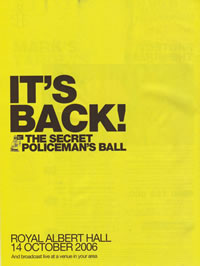Making charity events memorable
Four course meals, big round tables, perhaps a celebrity host – many of us will be familiar with the standard set-up of a fundraising event. For years, charities have been hiring hotel suites and conference facilities to stage them and it tends to work well. Guests have fun, plenty of money is raised and experienced venue operators ensure proceedings go smoothly.
But once the music has stopped and the last of the guests is heading off in a taxi, memories can begin to fade. By the time the Alka Seltzer is fizzing in a glass the next morning, some attendees might even struggle to recall what the event was actually for.
How to generate support into the future
So how exactly should a charity approach a fundraising event with the specific aim of ensuring it’s remembered beyond the morning after as a successful, enjoyable one which, crucially, will encourage attendees to support and donate into the future?
Gala dinners clearly aren’t the only way in which charities tempt people to raise money.
Event fundraising (encompassing charity runs, treks and triathlons) grew by 8% in 2012, while the number of fundraising events has increased by 700% since 2007.
Competition is fierce and charities are having to work harder to stand out from the crowd. Those in charge of organising events which are slightly more ‘sit down’ than your average triathlon therefore need to be more imaginative and make their gala lunches and dinners memorable by taking time to consider what might work.
For starters, people tend to remember when they get the chance to try something new and innovative. With technology advancing at a fast pace, there’s scope for this in the provision of activities or resources at fundraising events.
This new technology needn’t stand on its own and can potentially tie-in with existing ways of raising money. For example, a different take on what is a common fundraising method – an event auction – has been developed by Bidtech, with the company specialising in interactive, iPad-based technology.
Guests use iPads to participate in auctions and are able to take advantage of several features, including a real-time bidding process and the ability to browse auction lots. The iPads can also be used to make pledges, take photographs of the event, display a digital brochure or simply as a hassle-free system of registration for arriving attendees.
Mobile extends an event’s audience
Technology for event auctions has now also moved onto mobiles, with a unique URL available to participants on their own smartphones. Bids can therefore be made by people who aren’t even present at an event, extending the numbers of potential donors.
Innovative thinking can of course also extend to matters such as selecting a venue which differs from the norm or a theme for the event that will be new to your guests. Stand-out invitations or thank-you notes can play a part in creating an impression and quality, impressive food and drink can do the same.
Whenever planning a new or different element to an event however, it almost goes without saying that it needs to be appropriate to the demographic of the guests who’ll be present and appeal to that target audience.
No matter who’s on your guest list though, be prepared to work hard to come up with innovative solutions. With so many charities staging so many events, you need to create something which will stick in the mind for the right reasons and be remembered for longer than just a day.
Paul Beck is CEO of fundraising technology company Bidtech Event Technology which uses the Apple iPad to offer a cutting-edge fundraising and event management solution.
Advertisement





